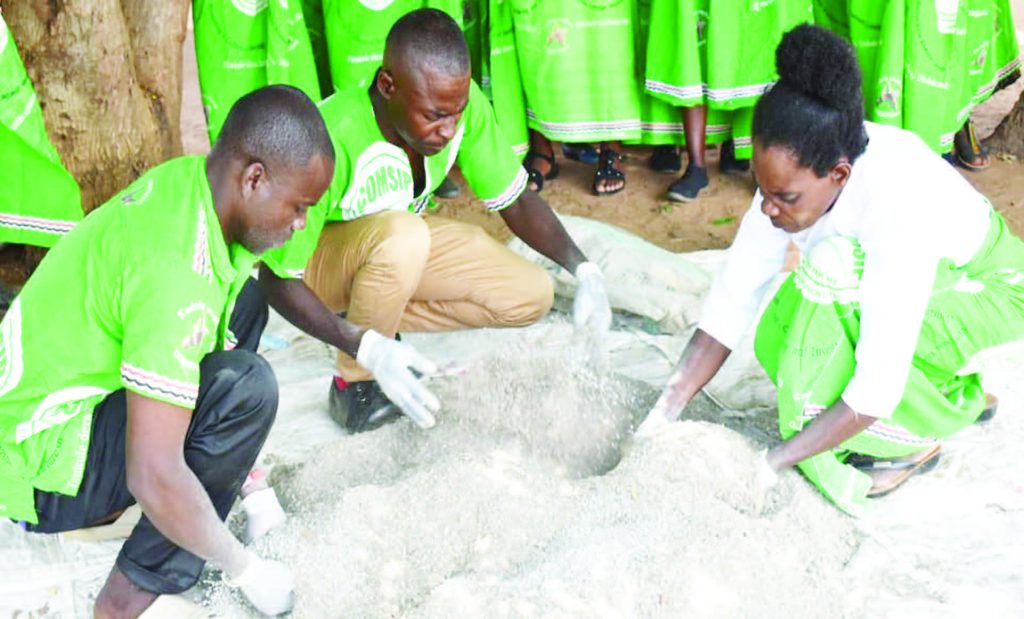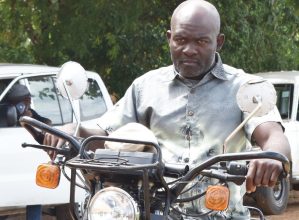Farmers turn to Mbeya fertiliser
In the blistering summer heat, Emilida Banda, 40, and her husband work their crop field where yields have been dwindling due to barren soils.
They have been toiling in vain for decades, scarcely producing enough food to take them to the next harvest.

As they sweat it out in the sun, Banda wonders if their labour would bear fruit this year.
Their uncertainties are made worse by the soaring prices of chemical fertiliser and forecasts of scanty rains in the growing season underway.
The family was already struggling to procure fertiliser when the cost of a 50 kilogramme bag cost about K70 000. Following the 44 percent kwacha devaluation last month, the price of chemical fertiliser has surged to K107 000.
The farming family from Traditional Authority Chilowamatambe in Kasungu has virtually waved goodbye to a bumper maize harvest.
“Chemical fertiliser has become exorbitant. A small-scale farmer like me cannot afford a single bag. With our fields highly degraded, you can’t expect anything good from our sweat,” she laments.
Smallholder farmers constitute 80 percent of the country’s workforce.
Most of them grapple with poverty, making farm inputs, especially fertiliser, unaffordable for them.
To close the gap, Comsip Cooperative Union Limited is working with the Ministry of Agriculture through the Kasungu District Council to empower members of savings and loan groups to make affordable fertiliser that guarantees them better yields from their small plots amid climate change.
They call it Mbeya fertiliser, a mix of chemical fertiliser with animal droppings and ash.
As part of the Climate Smart Enhanced Public Works Programme, the groups dominated by the ultra-poor who receive monthly social cash transfers are being trained to make cost-effective fertiliser with the potential to revolutionise farming.
From a 50kg bag of chemical fertiliser, a farmer produces five bags of Mbeya, a lifeline for the likes of Banda, a member of Senjere Comsip Savings and Loan Group.
She is among the farmers trained to make Mbeya amid the prohibitive costs of chemical fertilisers.
Her colleague Jobu Mwale has produced five bags in time for the onset of the rainy season.
Mwale expects to produce 100 bags of maize.
His ambition highlights the transformative potential of Mbeya fertiliser, not only securing food for his family but also children’s right to education.
“I obtained a loan from my group to buy a bag of fertiliser. I also want to make more Mbeya using Urea fertiliser,” he states.
Mwale has been using Mbeya since last year.
The training by Comsip Cooperative Union has boosted his knowledge and yield.
Jossam Saka, an executive member of the group, says Mbeya is simple to produce and use.
The farmers blend chemical fertiliser with locally available ingredients, especially manure, maize bran and ash.
Explains Saka: “We mix 10kg of chemical fertiliser with 20kg manure, 20kg maize bran, 10kg of ash and sprinkles of water.
“We keep the mixture in airtight plastic bags for 21 days. Then we spread them in the open and pack them in ordinary bags, ready for use. If you can’t afford the 10kg of fertiliser, you can use urine to make nitrogen fertiliser.”
Mbeya fertiliser aside, the project promotes sustainable and efficient farming practices such as sasakawa which involves planting one maize seed per station.
Wezi Phiri, Comsip community facilitator in Senjere Cluster, says the innovations have triggered a shift in farmers’ attitudes.
“More farmers now cultivate larger plots, signalling a positive change for families and the nation,” she says.
The initiative is part of the national push for Sustainable Development Goal (SDG2) two: Ending hunger and achieving food security by 2030.
Comsip development communication officer Mercy Kayuni says the project has instilled a culture of saving and climate-start agriculture in the target communities, reducing hunger and poverty from the household level.
The poverty projection based on gross domestic product (GDP) per capita growth between 2019 and 2023 shows that the number of people living on less than $2.15 per day increased from 70.1 percent to 72 percent.
Poverty and hunger are inextricably linked. Poverty causes hunger.
Kasungu community development officer Stella Kalasa envisions a district-wide implementation of the Mbeya fertiliser initiative.
She says: “Mbeya fertiliser is rich in nutrients needed to improve and maintain soil structure, texture, colour, depth, aeration and fertility.
“It is easy to make and we want this initiative to be implemented across the district and beyond. That way, we can achieve food security and break the cycle of poverty and hunger.”





